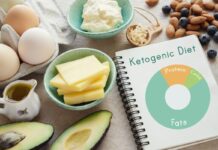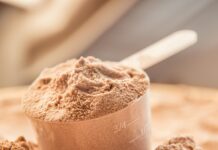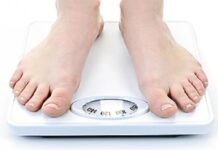Building muscles has become increasingly popular among women physically and aesthetically. Not only does it make you stronger, but it also improves your metabolic rate, which helps you burn fat.
Regular involvement in a certain weight-training regimen results in an increase in muscle mass, or hypertrophy. When you overload and break down your muscle cells with weight training, your body responds by rebuilding at a larger size during your rest periods between training sessions.
If you’ve decided to grow stronger, you’re undoubtedly wondering how to obtain the best results the quickest. The solution is hard effort, perseverance, a lot of gym time, and a healthy diet.
A usual rate of muscle building is 1/2 pound per week with an intensive training program and good muscle fuelling. Although hormonal constraints may reduce this pace of absolute muscle building in women, Women in Sport reports that women may improve their relative strength at the same rate as males.

Recognize Female Muscle Growth
Muscle development happens when the muscles are subjected to increasing quantities of tension. This produces muscle fibre damage, which the body must subsequently heal. The tensile strength and thickness of the muscle fibres grow with each repetition of the repair and healing process. This is your body’s technique of adjusting to the stress so that it can manage future loads better.
Women do not increase muscle mass as rapidly as males do due to lower amounts of muscle-building hormones such as testosterone and growth hormone. Hormone levels have been observed to rise in women who follow a muscle-building program on a regular basis.
Women continue to exhibit significant improvements in muscle mass, and the American Council on Exercise estimates that a few months of weight training will result in a 20 to 40% increase in muscle strength.
The ideal technique to strain the muscles and promote muscular growth is to lift heavyweights in a progressive manner. You must also consume the appropriate number of calories as well as the appropriate amounts of each macronutrient – protein, carbohydrate, and fat. The more efficient you are in each of these areas, the faster your muscles will grow.
Exercise to Increase Muscle Mass
When discussing female strength-training workouts, most people use the term “toning” Toning yoga techniques, ballet routines, and full-body workouts with 5-pound dumbbells are all promoted in many fitness periodicals. Although these workouts are helpful for developing a foundation of functional strength, they will not result in significant muscular growth.
Compound, multi-joint motions that engage a large amount of muscle tissue at once are the finest workouts for muscle growth. You can lift greater weights for each rep with these routines than you can with isolation workouts like biceps curls, which only engage one muscle group.
Consume Enough Calories
It’s not just about the workout; your nutrition has a big impact on how much muscle you grow and how quickly you gain it. If you don’t consume enough calories, protein, and carbohydrates, your muscles will lack the energy and basic ingredients they require to grow.
Even if you want to shed fat, heavy weightlifting frequently involves slightly increasing your calorie consumption. Because muscle growth requires so much energy, you may still shed fat when in a calorie surplus if you work out vigorously.
However, calorie requirements are very unique, and determining your ideal quantity can be difficult. You may estimate your daily calorie requirements for weight maintenance by considering your age and exercise level.
The Dietary Guidelines for Americans, 2015-2020, for example, state that the typical active 35-year-old woman need 2,200 calories per day to maintain her weight. She’ll need more than this to gain weight in the form of muscular mass.

But that’s about all. Michael Matthews, a fitness specialist, suggests a small 5 to 10% increase above your regular weight-maintenance calories for bulk growth. That’s a daily excess of 110 to 220 calories — around 1 to 2 teaspoons of peanut butter — for the 35-year-old.
Fat Calculation
Fats, particularly polyunsaturated and monounsaturated fats found in fish, nuts, seeds, avocados, and olive oil, are essential for good health. However, they have a modest function in a muscle-building diet. Matthews suggests consuming 0.3 grams of fat per pound of body weight every day. If you weigh 140 pounds, that equates to 42 grams of fat each day.
After you’ve determined your protein and fat requirements, the remainder of your calories should come from carbs.

















